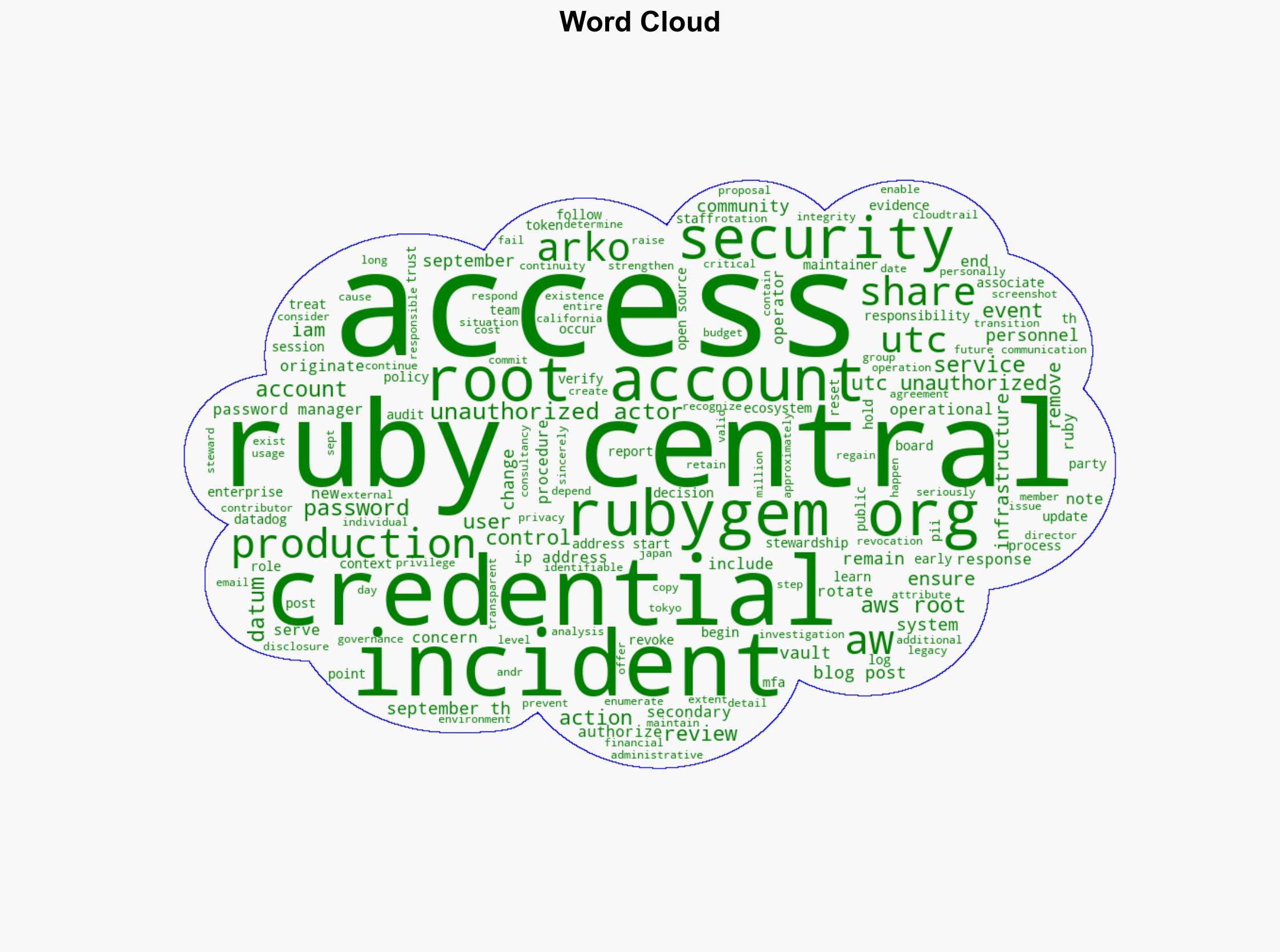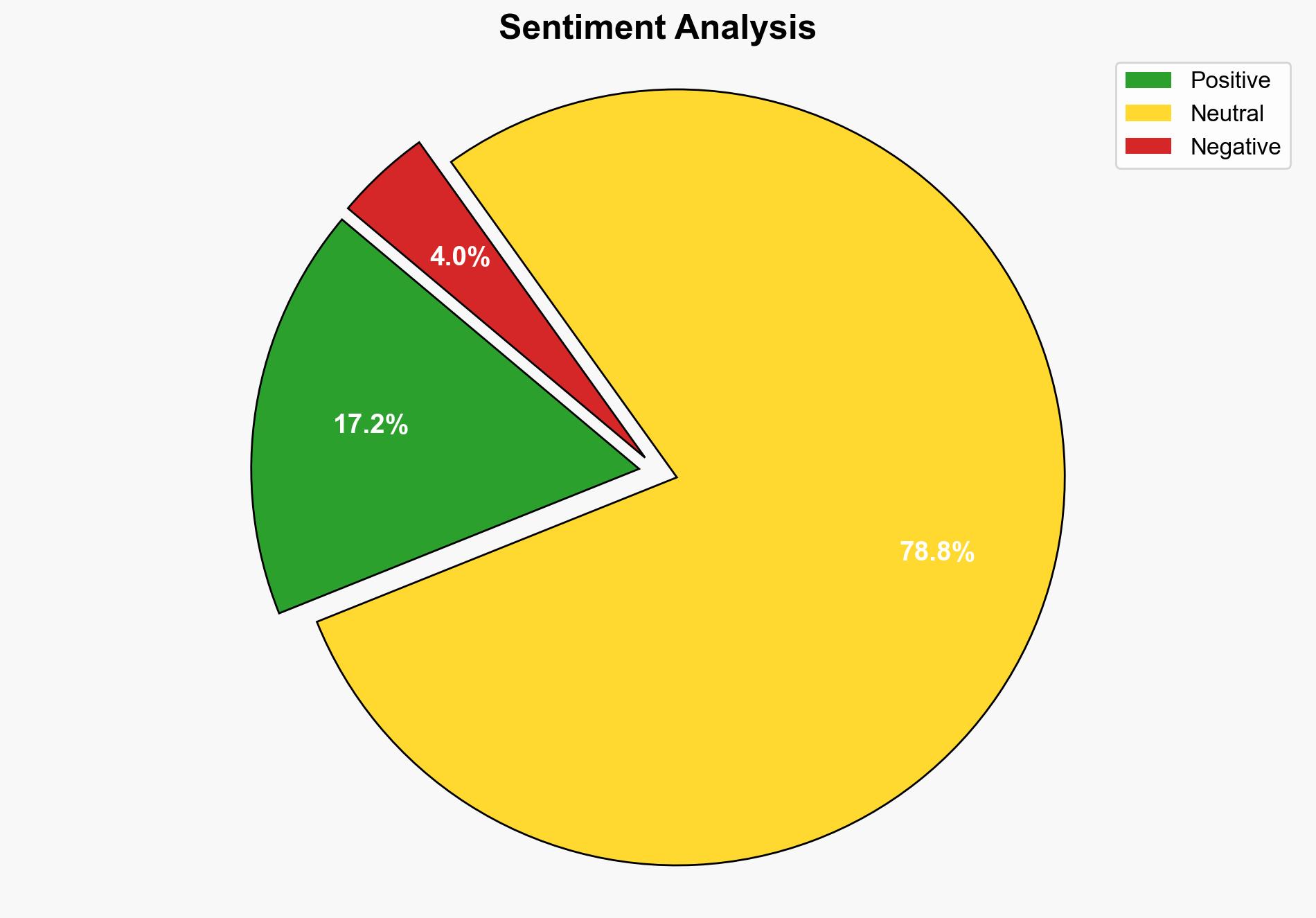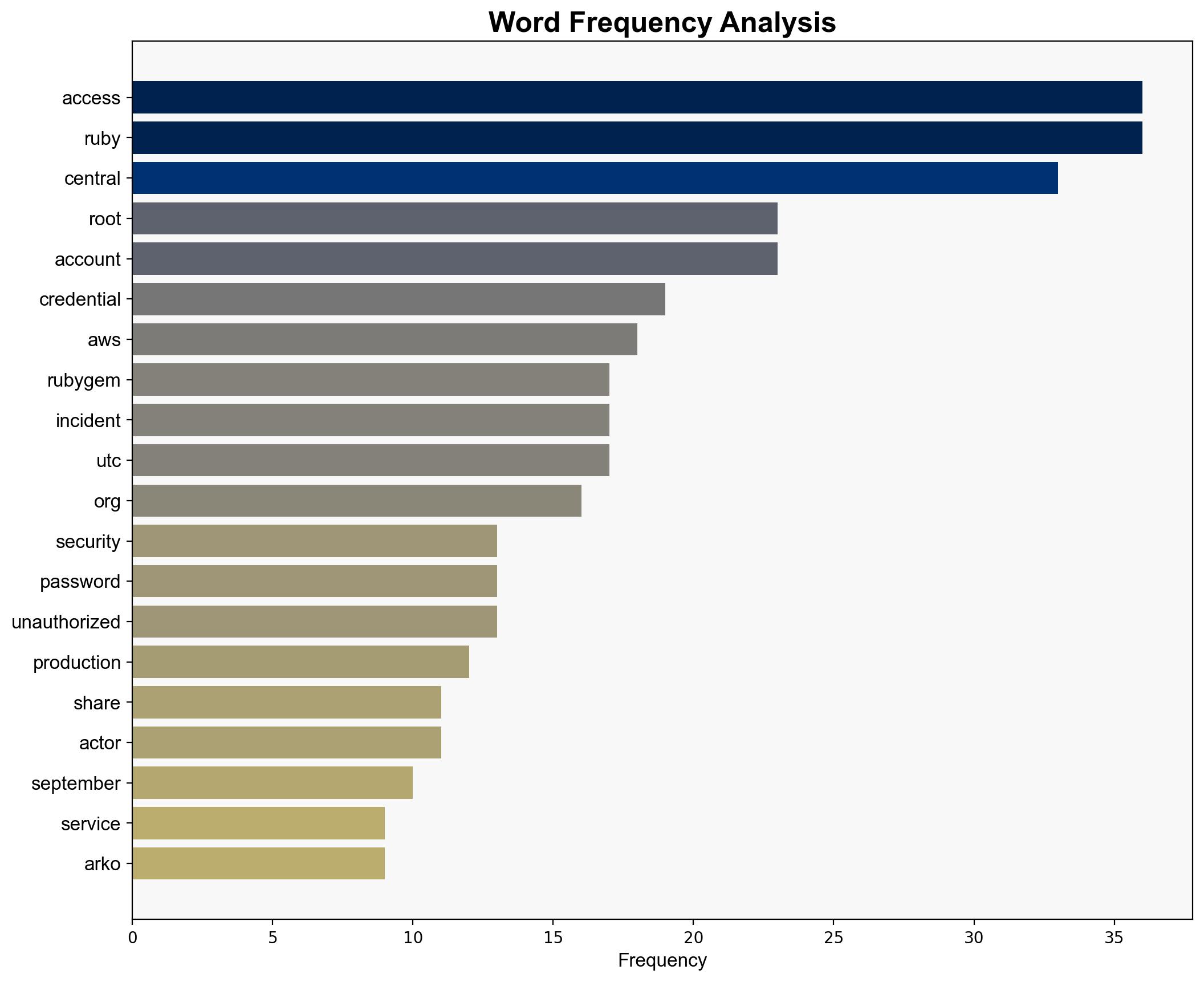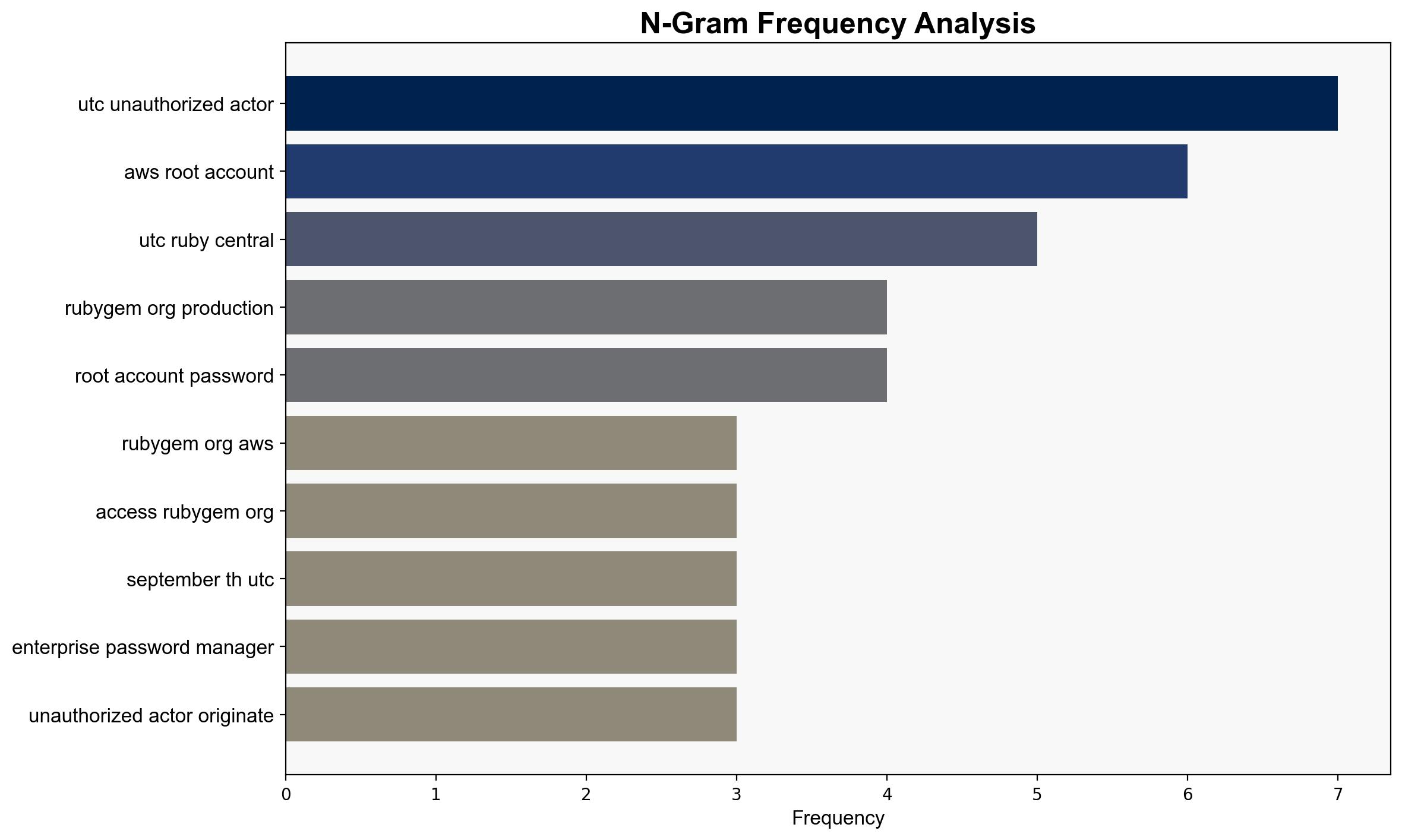Rubygemsorg AWS Root Access Event September 2025 – Rubycentral.org
Published on: 2025-10-09
Intelligence Report: Rubygemsorg AWS Root Access Event September 2025 – Rubycentral.org
1. BLUF (Bottom Line Up Front)
The most supported hypothesis is that the unauthorized access to Rubygemsorg’s AWS root account was due to internal security lapses, specifically the failure to rotate credentials and manage access permissions effectively. Confidence in this assessment is moderate, given the available evidence and the structured analysis conducted. Immediate action is recommended to enhance credential management practices and improve access control mechanisms.
2. Competing Hypotheses
1. **Internal Security Lapse Hypothesis**: The breach resulted from inadequate internal security practices, including the failure to rotate AWS root credentials and manage access permissions properly. This hypothesis is supported by the evidence of shared credentials and the lack of timely password changes.
2. **External Malicious Actor Hypothesis**: The breach was orchestrated by an external malicious actor who exploited vulnerabilities in the system to gain unauthorized access. This is supported by the unauthorized IP address activity from San Francisco and the subsequent actions taken by the intruder.
Using ACH 2.0, the internal security lapse hypothesis is better supported due to the documented internal procedural failures and the timeline of events indicating lapses in credential management.
3. Key Assumptions and Red Flags
– **Assumptions**: It is assumed that all relevant security protocols were initially in place and that the breach was solely due to credential mismanagement. There is also an assumption that the unauthorized IP address was not spoofed.
– **Red Flags**: The existence of shared credentials in a password manager accessible to multiple individuals raises concerns about the overall security culture. The lack of immediate detection of unauthorized access suggests potential gaps in monitoring and alert systems.
– **Blind Spots**: The possibility of insider involvement or collusion is not thoroughly explored, and the potential for advanced persistent threats is not addressed.
4. Implications and Strategic Risks
– **Cybersecurity Risks**: Continued vulnerabilities could lead to further unauthorized access, data breaches, and potential exploitation by malicious actors.
– **Reputation Risks**: The incident could damage trust in Rubycentral.org’s ability to safeguard critical infrastructure, impacting its reputation among developers and stakeholders.
– **Escalation Scenarios**: If not addressed, similar incidents could escalate, leading to broader systemic vulnerabilities and potential exploitation by state-sponsored actors.
5. Recommendations and Outlook
- Implement robust credential management practices, including regular rotation and auditing of access permissions.
- Enhance monitoring and alert systems to detect and respond to unauthorized access attempts promptly.
- Conduct a thorough investigation to rule out insider threats and assess the potential for advanced persistent threats.
- Scenario Projections:
- Best Case: Strengthened security measures prevent future breaches, restoring stakeholder confidence.
- Worst Case: Continued vulnerabilities lead to significant data breaches, causing reputational and operational damage.
- Most Likely: Incremental improvements in security practices reduce but do not eliminate the risk of future incidents.
6. Key Individuals and Entities
– Andr Arko
– Joel Drapper
– Rubycentral.org
7. Thematic Tags
national security threats, cybersecurity, counter-terrorism, regional focus




